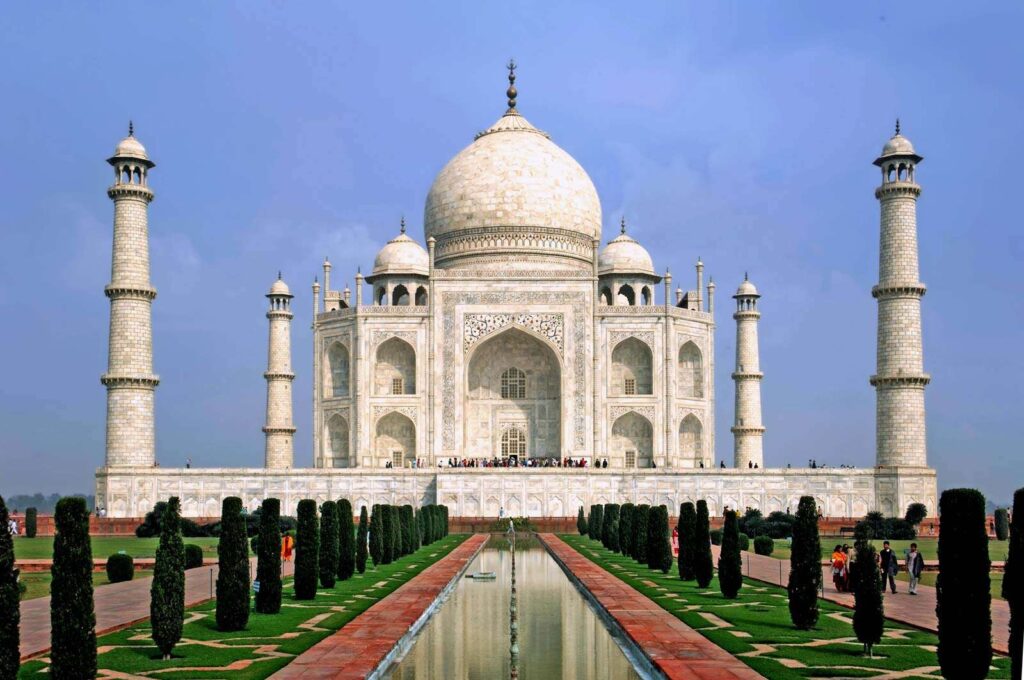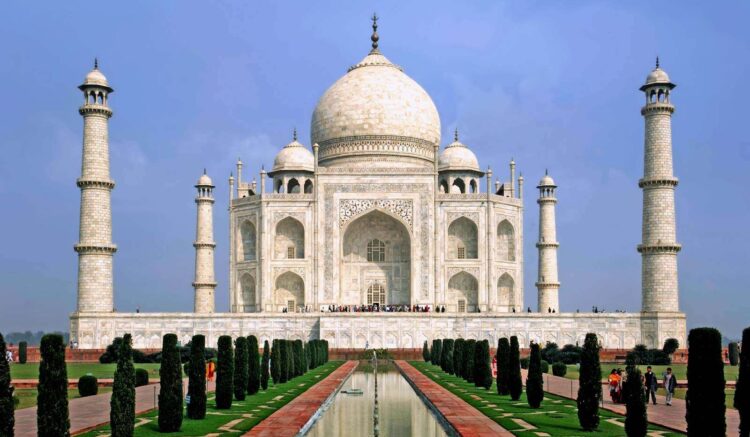The taj mahal crown of the palace is an livery white marble mausoleum the southern bank of the river Yamuna in the Indian city Agra was commissioned in 1632 by mughal emperor shah Johan from 1628 to 1658 to house the tomb of his favorite wife mumtaz mahal also houses the tomb of shah Johan hime self tomb is the centerpiece of a complex which includes a mosque and a house and is set in formal garden bounded on three sides by a crenellated wall bounded on three sides by a crenellated wall.
Construction of the mausoleum was essentially completed in 1643 but work continued on other phases of the project for another years the taj complex is beloved to have been completed in its entirely in 1653 at a cost at the to be around 32 million rupees which in 2020 would be 70 billion rupees project employed some artisans under the guidance of a board of architects of the building.
The taj mahal was designated as a site in 1983 for being the jewel of Muslim art in India and one of the universally admired master pieces of the world heritage is regarded by many as the best example of mughal architecture and a symbol of rich history the taj mahal attracts 7-8 million visitors and in 2007 it was declared dinner of the new 7 wonders of the world.
Etymology
Abdul humid lahauri in his book from 1636 refers to taj mahal as rauza munawwara rawdah munawwarah meaning the illumined or illumined tomb.
The name used now taj mahal comes from Persian taj mahal and means crown palace mahali is also the surname of mumtaz mahal for whom shah Johan built the mausoleum.

Inspiration
Taj mahal was commissioned by shah Johan in 1631 to be built in the memory of his wife mumtaz mahal who died on 17 June that year while giving birth to their 14th child gauhara begum construction started in 1632 and the mausoleum was are completed in 1648 while the surrounding buildings and garden were finished five years later imperial court documenting shah Johan grief after the death of mumtaz mahal illustrates the story held as the inspiration for the taj mahal.
Taj mahal incorporates and expands on design traditions of indo Islamic and earlier mughal architecture specific inspiration came from successful timunid and mughal buildings including the the tomb of timer progenitor of the mughal dynasty in Samarkand tomb are which inspired the charbagh gardens and hash Badeshi plan of the site lfmad ud daulahs tomb sometimes called the baby and shah Johan own jama masjid in Delhi while earlier mughal buildings were primarily.
Tomb
Tomb is the central focus of the entire complex of the taj mahal it is large white marble structure standing on a square plinth and consists of a symmetric building with an wan an arch shaped doorway topped by a large dome and finial like most mughal tombs the basic origin.
Base structure is a large multi chambered cube with chamfered comes forming an unequal eight sided structure that is approximately sides each side of the iwan is framed with a huge or vaulted archway with two similarly shaped arched balconies stacked on either side replicated on the chamfered corner the main chamber houses the false of mumtaz mahal and shah Johan the actual graves are at a lower .
Also Check Chini Ka Rauza
It was built to honor the favorite wife of shah Johan
Many of the world most famous buildings have been dedicated to the leaders such as kings and pharaohs or the gods but not the taj mahal it was built to honor the mogul emperor beloved wife mumtaz who died childbirth.
Had many wives which are also buried in the same complex but it was mumtaz who was his favorite wife so the is a romantic and tragic story behind has been named as one of the most romantic in history.
The taj mahal is one of the new Seven Wonders of the World
In people from all over the world votesd the taj mahal as one of the new Seven Wonders of the World it was that was started because all of the old wonders of the world except cheap pyramid had been destroyed.
It has Islamic calligraphy inscriptions all over
The calligrapher left a very humble signature that can be translated as written by the being amanita khan Shiraz calligraphic inscriptions in Arabic are texts from the Quran and they are beautifully in various places the most prominent
5 x surprising facts about taj mahal
The garden in front of the galleries is subdivided into four quarters nay main walk ways and each quarters in turn subdivided by the narrower cross axial walkways on the immured Persian scheme of the walled in garden the enclosure walls on the east and west have a pavilion at the centre.
An immense mausoleum of white marble built in Agra between 1631 and 1648 by order of the Munhall one of the universally admired masterpieces of the world heritage the four free standing minerals at the corners of the platform added a hitherto unknown dimension to the mughal architecture the four minerals provide not only a kind of spatial reference to the monument but also give a three dimensional effect to the edifice.
The mosque and the guest house in the taj mahal complex are built of red sandstone in contrast to the marble tomb in the centre both the buildings have a large platform over the terrace at their front both the mosque and the buildings have a large platform.

